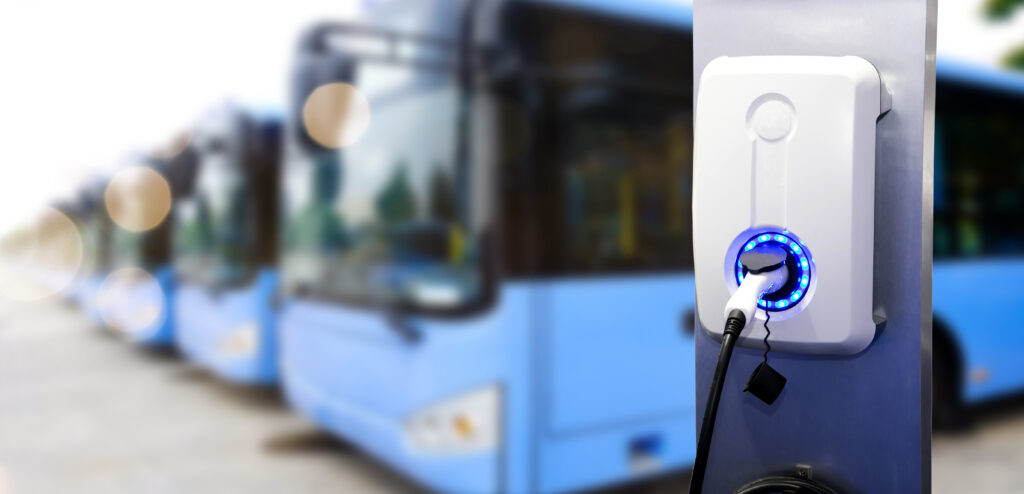
Mass Fleet Advisor FAQ
▸What exactly will be in my Fleet Electrification Report?
Your personalized Fleet Electrification Report will provide 1-1 vehicle replacement recommendations, suggested infrastructure upgrades, the number of chargers needed for your fleet, a total cost of ownership analysis for the replacement vehicles, and detailed information on incentives and resources. No financial support is provided through Mass Fleet Advisor.
▸Can I still participate if I know full electrification is not feasible for my fleet now, but is a long-term goal?
Absolutely! Mass Fleet Advisor welcomes fleets at all phases of their electrification journey. Your Electrification Report will be a valuable resource to help you streamline your fleet transition when you’re ready.
▸Does Mass Fleet Advisor help cover the costs of vehicles, chargers, or electrical upgrades?
No, Mass Fleet Advisor provides information on incentive programs but does not provide direct funding or financial support to participants at any phase of the program.
▸Does Mass Fleet Advisor also provide assistance for electric vehicle supply equipment (EVSE)?
We’ll provide you with the type and number of chargers we recommended to support your electrified fleet based on vehicle types and duty cycles. Participants will also undergo a virtual site assessment, where the Mass Fleet Advisor team will evaluate current electrical capacity and necessary upgrades to support the chargers needed based on the size of and vehicles in your fleet, as well incentive programs available through your utility. As with the vehicle side, no funding or financial support is provided.
▸Do I have to make any financial commitments to participate in Mass Fleet Advisor?
Mass Fleet Advisor is a free service and participants are NOT required to purchase any of the vehicles, infrastructure upgrades, or charging equipment recommended.
▸Are alternative fuels or other technologies included in the program?
Mass Fleet Advisor considers only zero-emission technologies to provide maximum benefit to our communities. While most of our focus is on electric vehicles, we can also support transition to fuel cell electric vehicles.
▸If I complete Phase 1, how can I be selected for Phases 2 or 3?
Fleets are moved through phases based on both interest and other factors, including location in an environmental justice community (EJC) and readiness to purchase. After Phase 1, your Mass Fleet Advisor team will discuss interest and availability for Phase 2, and the same procedure will follow for Phase 3. All phases are 100% FREE!
▸Can any fleet join Mass Fleet Advisor?
Fleets must be non-public, have at least three vehicles of which at least one is a medium- or heavy-duty vehicle (class 2b and above), conduct their primary business operations in Massachusetts, and have a domicile location in Massachusetts.
▸My fleet domiciles in multiple different states. Can I still participate?
As long as your fleet has at least one domicile location in Massachusetts, you can participate. We will give 1-1 replacement recommendations for all the vehicles in your fleet, but only the sites in Massachusetts will receive a virtual site assessment.
Electrification FAQ
▸Why is now a good time to electrify?
The electric truck market is evolving rapidly, with over 140 truck models in classes 2-8 now commercially available to meet the diverse needs of fleets. After adopting California’s Advanced Clean Trucks rule in 2021, which requires vehicle manufacturers to sell an increasing share of zero-emission models beginning in model year 2025, Massachusetts is poised to be a national leader for electric truck deployments and healthier, cleaner communities. These advancements mean that electric trucks are increasingly available and cost-effective for fleet owners.
▸What are the benefits of owning and operating a zero-emission vehicle (ZEV) fleet?
Fleets and businesses that use ZEVs save money through increased fuel efficiency and reduced fuel and maintenance costs. ZEVs produce less noise and fumes, improving quality of life for truck drivers and the communities they operate in. A ZEV transition also brings new recruitment and retention opportunities, as well as business growth, as drivers and customers prioritize companies with clean energy operations.
▸What incentives are available in Massachusetts?
Many fleets in Massachusetts are now eligible for purchase incentives through MOR-EV, offered by the Massachusetts Department of Energy Resources. For more information, visit: https://mor-ev.org/. Eversource also offers charging rebates and National Grid has several charging programs to reduce the cost of transition. For a full list of local, state, and federal incentives, visit the Alternative Fuels Data Center.
▸How do I know which ZEV is right for me?
Finding the electric truck best suited for your fleet starts with an understanding of how your current vehicle needs translate to a ZEV. Route data and fleet telematics like location, total mileage, and vehicle uptime and downtime can help you find the right model.
With every major manufacturer offering their own version of an electric truck, you now have more options than ever before. Connecting with an approved, local dealer will be crucial for understanding the current state of the ZE truck market and the timelines needed to complete and receive orders. Your local dealer can also assist with cost comparisons between different products and break down lifetime costs as compared to your conventionally fueled vehicles.
With every major manufacturer offering their own version of an electric truck, you now have more options than ever before. Connecting with an approved, local dealer will be crucial for understanding the current state of the ZE truck market and the timelines needed to complete and receive orders. Your local dealer can also assist with cost comparisons between different products and break down lifetime costs as compared to your conventionally fueled vehicles.
▸What steps do I need to take to install proper infrastructure for my fleet?
There’s a common misconception that purchasing a ZEV is a one and done solution, which often can leave fleets with an expensive new asset and no plan in place to maintain the purchase over time. Those considering a transition to an electric fleet should take the time up front to understand and plan future infrastructure logistics, like utility upgrade costs and timelines for charger installation, to optimize the transition.
Fleet managers should also evaluate building and land configurations to get a sense of necessary upgrades—from trenching and laying down conduit, to additional energy storage. While it may seem trivial, things like charger location really matter. Chargers should be placed based on driver behavior so you can accommodate the end user and unlock maximum efficiency. This will also allow you to anticipate potential scaling needs should your fleet continue to expand.
Fleet managers should also evaluate building and land configurations to get a sense of necessary upgrades—from trenching and laying down conduit, to additional energy storage. While it may seem trivial, things like charger location really matter. Chargers should be placed based on driver behavior so you can accommodate the end user and unlock maximum efficiency. This will also allow you to anticipate potential scaling needs should your fleet continue to expand.
